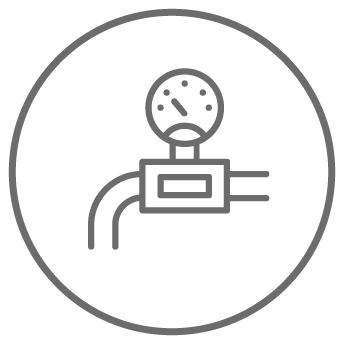Oil exploration in Italy - History

It can be said that the exploration and production of hydrocarbons in Italy with industrial techniques began in the second half of the nineteenth century and then developed considerably after the Second World War with the discovery of natural gas fields in Basilicata and Calabria.
Italy has large fields and ranks 4th among oil producing countries in Europe and 49th worldwide. At the end of 2012 the estimates of the quantity of oil present in Italy spoke of 82.1 million tons with 55.3 million possible reserves. As regards methane and natural gas, however, there are 59.4 billion cubic meters of proven reserves and 21.7 billion of possible reserves.
The presence of oil in Italy, particularly in the Apennines and Sicily, was known in the past and oil and hydrocarbons had various uses. In ancient times, bitumen was used as a mastic and as a waterproofing agent and oil was used for skin diseases, as well as for lighting.
Only from the Middle Ages and up to the Unification of Italy did oil begin to be used for commercial purposes and from the mid-nineteenth century, with the transition to an industrial economy, oil was required for lighting. This leads to the exploration and production of hydrocarbons in a systematic way, which since the Second World War is carried out with modern means and is based on the geological sciences.
This activity will lead to the discovery of 450 deposits between land and sea and since the 19th century, there has been the production of natural bitumen, used to asphalt roads and obtain oil through distillation.
History of hydrocarbon exploration and production
The energy crisis of 1973 and 1979 brought about by the Iranian revolution led to the awareness of Italy's energy dependence on a few producing countries and the need to find new fields. For example, deep exploration in the Po Valley allows us to discover the Malossa oil field and in Sicily between the 70s and 80s, there are other sources of oil. In 1975, a French company, ELF, discovered the Rospo oil field in the Middle Adriatic at a depth of 1300 meters: it is the first field in the world developed since 1982 with the drilling of horizontal wells within the reservoir. In addition, that year gas was found in Treviso and subsequently in Basilicata thanks to the evolution of exploration techniques and geological knowledge. Between 1988 and 1902 the deposits of Monte Alpi, Monte Enoc, Cerro Falcone and Tempa Rossa were discovered, which constitute the largest oil fields on the mainland in continental Europe. In 1984, the light oil field of Villafortuna was discovered by AGIP, also in the Po valley near Trecate. Given the richness of the Italian subsoil and the intense exploration and production of hydrocarbons in 1991 with Law 9 "Rules for the implementation of the national energy plan", it will be established that the prospecting, exploration and production of hydrocarbons they must be subject to environmental impact assessment and the obligation of territorial restoration.
The production of hydrocarbons and the commitment of Settala Gas
In 1999, 17 new wells had been drilled and in 2000 the Italian production of oil was equal to 130,000 barrels per day, or 0.1% of the oil produced in the world. In 2006, another 49 wells had been drilled, 34 to reach the fields already discovered and 15 to identify new reserves. Between 2007 and 2008, the number of wells in places not yet exploited was 77.
In 2009, Italian oil production amounted to 42.6 million barrels, equal to approximately 116,712 barrels per day, deriving from Basilicata (74%), offshore fields (with a weight of 13%), Sicily (9%) and Piedmont ( 2%).
In this context, the Settala Gas company stands, specialized for over 40 years in the production of hydrocarbon gas and able to respond to any request to provide competitive solutions quickly, efficiently and in full compliance with regulations. Contact us to find out more!




